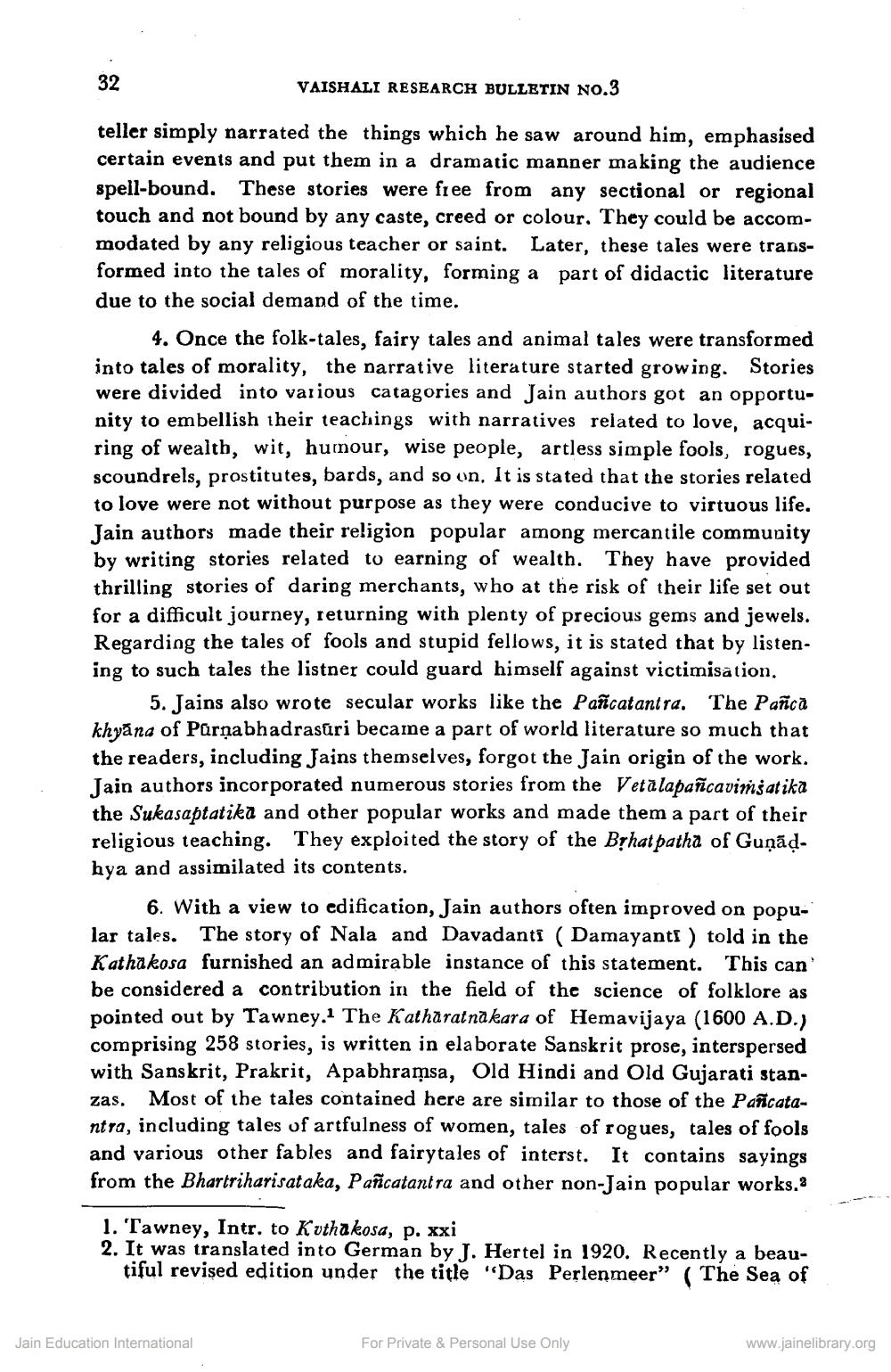________________
32
VAISHALI RESEARCH BULLETIN NO.3
teller simply narrated the things which he saw around him, emphasised certain events and put them in a dramatic manner making the audience spell-bound. These stories were free from any sectional or regional touch and not bound by any caste, creed or colour. They could be accommodated by any religious teacher or saint. Later, these tales were transformed into the tales of morality, forming a part of didactic literature
due to the social demand of the time.
4. Once the folk-tales, fairy tales and animal tales were transformed into tales of morality, the narrative literature started growing. Stories were divided into various catagories and Jain authors got an opportunity to embellish their teachings with narratives related to love, acquiring of wealth, wit, humour, wise people, artless simple fools, rogues, scoundrels, prostitutes, bards, and so on. It is stated that the stories related to love were not without purpose as they were conducive to virtuous life. Jain authors made their religion popular among mercantile community by writing stories related to earning of wealth. They have provided thrilling stories of daring merchants, who at the risk of their life set out for a difficult journey, returning with plenty of precious gems and jewels. Regarding the tales of fools and stupid fellows, it is stated that by listening to such tales the listner could guard himself against victimisation.
5. Jains also wrote secular works like the Pañcatantra. The Pañca khyāna of Purṇabhadrasuri became a part of world literature so much that the readers, including Jains themselves, forgot the Jain origin of the work. Jain authors incorporated numerous stories from the Vetalapañcavimšatikā the Sukasaptatika and other popular works and made them a part of their religious teaching. They exploited the story of the Bṛhat patha of Guṇāḍhya and assimilated its contents.
6. With a view to edification, Jain authors often improved on popular tales. The story of Nala and Davadantî (Damayanti) told in the Kathakosa furnished an admirable instance of this statement. This can' be considered a contribution in the field of the science of folklore as pointed out by Tawney.1 The Katharatnakara of Hemavijaya (1600 A.D.) comprising 258 stories, is written in elaborate Sanskrit prose, interspersed with Sanskrit, Prakrit, Apabhramsa, Old Hindi and Old Gujarati stanzas. Most of the tales contained here are similar to those of the Pañcatantra, including tales of artfulness of women, tales of rogues, tales of fools and various other fables and fairytales of interst. It contains sayings from the Bhartriharisataka, Pañcatantra and other non-Jain popular works."
1. Tawney, Intr. to Kuthakosa, p. xxi
2. It was translated into German by J. Hertel in 1920. Recently a beautiful revised edition under the title "Das Perlenmeer" (The Sea of
Jain Education International
For Private & Personal Use Only
www.jainelibrary.org




